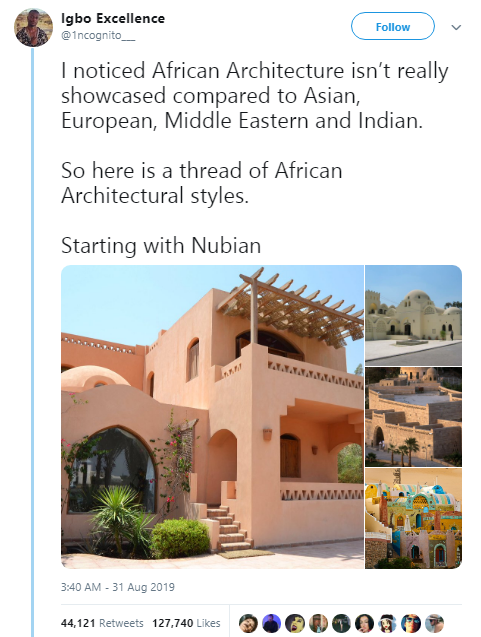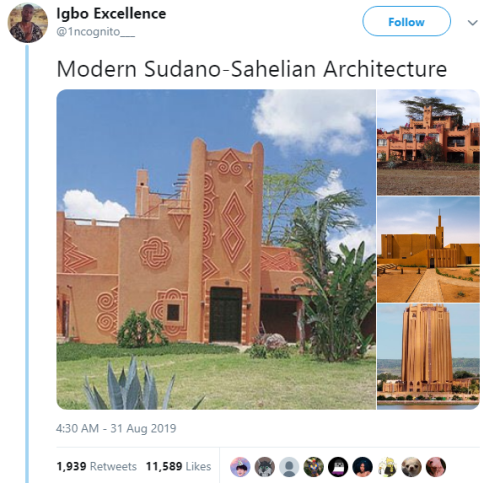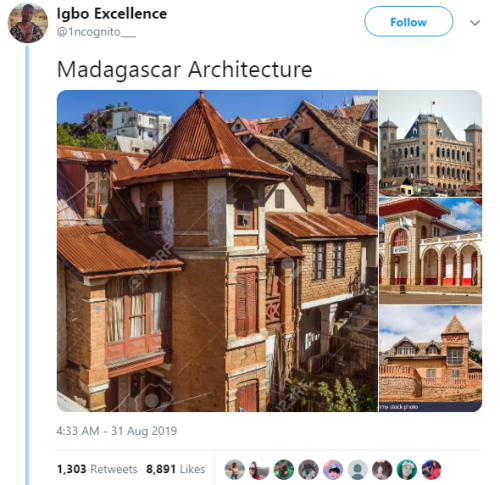Master List Of Superpowers
Master List of Superpowers
power themes: light, dark, earth, water, electricity, air, life, psychic, energy, fire +
Light ✨
Dark light manipulation: create the darkes light in existence
White light manipulation: create sacred light
Photokinesis
Force-field generation: create rpotective shield of solid photons
Invisibiity: be unseen
Laser emission: bend light wavelengths to create lasers
Light absorbtion: absorb the light around you
Light generation: emit blinding light or glow in the dark
Light mimicry: take on the traits of light
Photoportation: teleport by using photons
Projectie insibility: turn other things invisible
Evil banish: rid and banish all spirits of evil and black magic
Dark 🖤
Umbrakinesis - can manipulate and control darkness or shadows.
Animated Shadow - Animate one's shadow.
Light Absorption - block out light in an area
Night Vision - see in the dark.
Sacred Darkness - create holy darkness.
Shadow Mimicry - become a shadow.
Umbraportation - teleport via the shadows and darkness.
Water 💧
Hydrokinesis - manipulate and control liquid water and mold it into any desired shape or form
Aquatic Respiration - breathe underwater.
Atmokinesis - control and manipulate the various aspects of the weather by mixing water, ice, fire, earth, air, and lightning/electricity.
Dehydration - absorb water.
Hydroportation - teleport across short or long distances through liquid water.
Water Mimicry - turn into liquid water.
Water Generation - generate water.
Holy Water Manipulation - create, manipulate and control graceful waters.
Dark Water Manipulation - create, manipulate and control evil and dangerous waters.
Electricity ⚡
Quintessence Force - generates whitish-blue lightning that also contains pure life energy.
Electrokinesis - control, generate or absorb electric fields and shoot lightning bolts.
Activation & Deactivation - turn stuff on and off.
Positron Manipulation - control positrons, the antimatter counterpart to electrons.
Electrical Absorption: absorb electric energy
Electric Mimicry - transform entire body into a lightning-like being of pure electrical energy.
Electroportation - teleport with lightning/electricity
Divine Lightning Manipulation - create and control the brightest lightning.
Black Lightning Manipulation - create and control the darkest lightning.
Air 💨
Air Embodiment - Become the embodiment/personification of the element of air.
Aeroscience - Have absolute knowledge about air.
Aerokinetic Combat - Combine air-related abilities with combat.
Aerokinetic Constructs -Create/Construct anything using air.
Aerokinetic Regeneration - Heal/Regenerate using air.
Aero-Telekinesis - Use telekinesis using air
Aeromancy - Gain divination via air
Air Mimicry - transform into a cloud of gas, fog, or mist.
Atmokinesis - manipulate the weather by mixing water, ice, fire, earth, air, and lightning/electricity.
Deoxygenation - suck up all the oxygen from a place.
Lung Adaptation - breathe anywhere.
Wind Generation - create blasts of wind.
Air Generation - create or generate blasts of air.
Pure Wind/Air Manipulation - create and control pure winds.
Dark Wind/Air Manipulation - create and control corrupted winds.
Levitation - the ability to make anything rise up in the air and move around under your control.
Life 🌱
Enhanced healing
Necromancy
Telepathy
Being able to mutate others
Change blood types at will
Blood Cloning: To create clones of themselves by using blood.
Blood Mimicry: To mimic the properties of blood. Blood Pressure: To manipulate the pressure and flow of blood inside bodies.
Blood Propulsion: To propel one's self using blood.
Blood Teleportation: To teleport through blood.
Blood Transformation: To transform matter into blood.
Haemokinetic Combat: To infuse blood in physical combat.
Haemopotent Regeneration: To regenerate oneself using blood.
Haemopotent Replication: To replicate powers with blood as a medium.
Thermovariance: To boil targets blood.
Fire 🔥
Holy Fire Manipulation - Generate and control flames of Heaven.
Inflammation - burn things.
Melting - heat molecules to melt things without touching or using fire
Plasmakinesis - control plasma.
Pyromancy- Divination via fire.
Pyrotechnics - create fireworks.
Self-Detonation - explode self and reform.
Stellar Manipulation - manipulate and control stars.
Thermokinesis - create, control and manipulate heat.
Pyroportation - teleport or move though fire.
Stellar Manipulation - manipulate and control stars.
Psychic 🌟
Astral Projection: the ability to have out of body experiences and separate the astral body from the physical body at will.
Aura Reading: the ability to perceive the energy surrounding a living being.
Auto-Writing: Writing without conscious thought. An act performed often by mediums.
Bilocation: Being in many places at once.
Channeling: Communicating with a spirit.
Clairalience: Having a smell perception outside the human senses.
Clairaudience: Having an auditory perception outside the human senses.
Claircognizence: Having a thought perception outside the human senses.
Clairgustance: Having a taste perception outside the human senses.
Clairsentience: Having a physical perception outside the human senses. Related to psychometry.
Clairvoyance: Having a visual perception outside the human senses.
Divination: Gaining insight into a situation by use of tools or ritual.
Dowsing: Ability to locate an object.
Energy Healing: The ability to mend physical, emotional, energetie and mental wounds with energy.
Levitation: Flying or floating.
Earth ⛰︎
Geokinesis - control, manipulate, create, generate and reshape or shape earth/rocks/stones
Earth Mimicry - have a body made up of earth or earthen substance
Atmokinesis - control and manipulate the weather by mixing water, ice, fire, earth, air, and lightning/electricity.
Crystallokinesis - manipulate minerals and crystals.
Ferrokinesis - manipulate metal at will.
Fraxikinesis - manipulate burnt matter.
Geo-Thermokinesis - manipulate, control, and create lava, magma and volcanoes.
Golem Creation - make golems out of inanimate materials like rocks, wood, plants, magma, etc.
Granulation - can turn things into sand.
Halokinesis - control and manipulate salt.
Hyalokinesis - control and manipulate glass.
Koniokinesis - manipulate and control dust particles.
Plassikinesis - manipulate and control all forms ofplastic.
Psammokinesis - can control and manipulate sand.
Terrakinesis - control, manipulate and alter/reshape the surrounding terrain and landscape at will.
Terraportation - teleport via the earth and earth- based materials.
Pure Earth Manipulation - Create, manipulate and control pure and good earth minerals.
Black Earth Manipulation - Create, manipulate and control corrupted and evil earth minerals.
Ice 🧊
Atmokinesis - control and manipulate the weather by mixing water, ice, fire, earth, air, and lightning/electricity.
Cryokinesis - control ice, snow and other forms of frozen water.
Freeze Breath - freeze things in solid ice.
Freezing - lower the temperature in kinetic atoms to freezing temperatures.
Frigokinesis - control snow either as precipitation or already on the ground.
Energy 💥
Dynamokinesis - manipulate existing energy.
Energy Blast - create blasts of energy.
Energy Emission - release energy.
Quintessence Force - create and manipulate unique form of electrical and life energy.
Mana Manipulation - manipulate magical energies.
Chi Manipulation - manipulate metaphysical life energies.
Omnikinesis - manipulate absolutely any form of energy and matter.
Gyrokinesis - manipulate gravity.
Sonokinesis - manipulate sound.
Maanetokinesis - manipulate magneuc energy.
Other
Aether Manipulation - manipulate the fifth, holiest element.
Cosmic Manipulation - manipulate the aspects of space.
Gravity Manipulation - manipulate gravity and gravitational forces.
Nether Manipulation - manipulate the final, unholiest element.
Space-Time Manipulation - manipulate either space or the concept of time.
If you like my blog, buy me a coffee☕ and find me on instagram! 📸
More Posts from Ajkiranwrites and Others
Anti-villain motivations besides "tragic past"
They do bad things because they’re scared.
They’re gullible or misinformed. Example: somebody who has been told the heroes are out to hurt them.
They are desperate for interaction, validation, kindness, or attention, and the dark side gives them those things.
They want to change their allegiance, but are pressured by people close to them to stay evil.
They have an otherwise noble goal that they will do literally anything to achieve. Example: somebody who wants to protect their child, even if it means throwing other children into danger.














i feel like we don’t talk about things like this enough

i hate it when i cant even write a poem about something because its too obvious. like in the airbnb i was at i guess it used to be a kids room cause you could see the imprint of one little glow in the dark star that had been missed and painted over in landlord white. like that's a poem already what's the point
how do i make my writing more ‘mature’? i always feel like no matter how sophisticated i write and no matter every which way i change it up it always has a sense of being childish or juvenile.
Making Writing Sound More Mature
1 - Better Plot and Story Structure - One of the telltale signs of juvenile writing is a story that meanders, has no obvious plot or structure, has no conflict or has a protagonist with no goal. So, make sure you have a well fleshed out plot, with a conflict, protagonist goal, and which hits the beats specific to your story's genre.
2 - Three-Dimensional Characters - If you're writing plot-driven fiction, make sure your main characters have a fleshed out personality, stakes, motivation, goal, and compelling relationships with other characters. If you're writing fully or partially character-driven fiction, do all of the above, but also make sure your main characters have a relevant internal conflict and a thoughtful character arc.
3 - Well-Developed Setting and World - One common hallmark of juvenile writing is a lack of "sense of place" and under-developed world building. So, make sure you put a lot of thought into where your story takes place... not just the immediate setting of each scene, but the overall world of the story, or at least the parts of it that are relevant.
4 - Incorporate Literary Devices - Juvenile writing tends to be lacking in the use of metaphor, simile, symbolism, irony, themes, and motifs. So, make sure to include those, but also take the time to make them relevant to your story.
5 - Include a Broad Range of Vocabulary - One common element of juvenile writing is a reliance on limited, simple vocabulary. Don't be afraid to use a thesaurus to find more interesting word choices--just be absolutely certain to crosscheck your choices with a dictionary to make sure they are the right choice. Online thesauruses in particular are bad about offering up bad suggestions. Also, make sure to learn and use special vocabulary that is relevant to your story, genre, or setting. For example, if your character is a retired police detective trying to solve a murder on his stalled cruise to Alaska, you need to make sure you know the proper investigative terminology, because he will definitely use it. And, by that same token, you'd want to make sure you know cruise ship lingo as well. And, part of this, too, is getting better at description and the inclusion of emotional and sensory detail.
6 - Use Varied Sentence Structure - This is a big one... juvenile writing tends to use repetitive sentence structure, such as simple sentences (she stood up, she went to the window, she waved at the man), lack of subordinate clauses (Tad Smith, who was a seasoned and retired investigator, had looked forward to this cruise his whole life...), repetitive starts (every sentence begins with a pronoun, for example), uniform length (all short sentences, for example.) So, make sure your sentences are varied. If you read them out loud, you don't want it to sound rhythmic, but more like a complex melody.
7 - Show, Don't Tell... Most of the Time - Telling definitely has its place, but most of the time you want to show rather than tell, meaning that instead of stating things simply and directly (the sun was shining) you want to paint a clear but indirect image (dappled sunlight shone through the trees.)
8 - Avoid Cliche Phrases - Human language is littered with everyday phrases like "to each their own" or "better late than never." Generally-speaking, you want to avoid these phrases in your story, especially in exposition. If you include them anywhere, they're best spoken as dialogue by a character who it makes sense would say something like that. Likewise, be careful of cliche genre or character-type phrases. For example, villains who say things like "we're not so different, you and I..." or "I finally have you right where I want you!" These overused phrases tend to make stories sound juvenile and unpolished.
9 - Avoid Cliche Tropes - Another type of cliche to avoid if you want more mature-sounding writing is cliches of various tropes. Tropes on their own are a good thing, but when tropes are used the same way over and over again in a genre or type of story, they become predictable. For example, the super gorgeous protagonist who everyone is in love with, but they view themselves as plain and not special. Or the broken/hopeless/addict mentor character. It's not that you can't use any cliche tropes at all, just make sure your story isn't riddled with them, and do what you can to put your own spin on the ones you do use.
10 - Read, Read, Read - And I can't stress this enough... the absolute best way to improve your writing style and take your writing from juvenile to polished is to make sure you're reading a lot of fiction, in a lot of genres, by a lot of authors. Audio books, short stories, and poetry count, too. The more you read, the more you begin to: understand plot and story structure, recognize well-developed characters, easily envision complex settings and worlds, learn vocabulary and literary devices, become attuned to varied sentence structure, and learn to recognize cliche phrases and tropes.
Happy writing!
•••••••••••••••••••••••••••••••••
I’ve been writing seriously for over 30 years and love to share what I’ve learned. Have a writing question? My inbox is always open!
♦ Questions that violate my ask policies will be deleted! ♦ Please see my master list of top posts before asking ♦ Learn more about WQA here
Things almost every author needs to research
How bodies decompose
Wilderness survival skills
Mob mentality
Other cultures
What it takes for a human to die in a given situation
Common tropes in your genre
Average weather for your setting
reblog this if your blog is a safe space on april fools and won’t have any jumpers, screamers, or anything scary or anxiety inducing
now say it with me: authors/artists dont owe you moral purity. an author/artist job is not to hold you by the hand & tell you exactly what is Good™ & what is Bad™. you should be able to think for yourself
Reblog to let your followers know that they’re safe from jumpscares/screamers/etc from you on April 1st but they are NOT safe from getting boop’d like an idiot amen
10 Best Books About Writing Fiction
Someone recently asked me for some fiction writing book recommendations, so here they are!
Some fiction writing teachers try to steer their students clear of books about writing. While it’s true that there’s a lot of bad or dubious writing advice out there, my philosophy is that more information is always better. Over the years, I’ve read voraciously about fiction writing–upwards of 50 books about the writing life, plot, fiction craft, dialogue, character development, you name it. While I got a little something from each one, here are the 5 star gems that are worth sharing. Enjoy!
Best Books About the Writing Life
Bird by Bird, Anne Lamott

It’s a classic for a reason. Lamott’s trademark humor makes for an effortless read as she shares her wisdom into the process of writing. Equal parts technical help, encouragement, and brutal honesty balance throughout the book, keeping the reader engaged and in good spirits from start to finish.
From Where You Dream, Robert Olen Butler
Butler’s ideas about the process of writing fiction are not necessarily unique, but I’ve found no other book that discusses the writing “trance” as thoroughly as this one. The exercises in this book teach how you to access the writing “dream state” that good stories often come from. The book can be a little esoteric at times, but it’s worth the patience it takes to understand what Butler is getting at here. Especially recommended for writers who have intrusive inner critics, and those who have strong ideas but find that their writing feels lackluster and flat.
The Writing Life, Annie Dillard
This is a short read, so I’ll just provide a titillating quote and you can go pick it up for yourself: “One of the few things I know about writing is this: spend it all, shoot it, play it, lose it, all, right away, every time. Do not hoard what seems good for a later place in the book, or for another book; give it, give it all, give it now… Something more will arise for later, something better. These things fill from behind, from beneath, like well water. Similarly, the impulse to keep to yourself what you have learned is not only shameful, it is destructive. Anything you do not give freely and abundantly becomes lost to you. You open your safe and find ashes.” -Annie Dillard
Best Books About Fiction Craft
Self-Editing for Fiction Writers, Rennie Browne and Dave King

Hands down, this is the best craft book on the market. It’s written for beginning writers, but is layered and subtle enough to be useful for advanced writers as well. I’ve read and re-read this book at many different stages of my learning process and taken away something new each time. Unlike the cover suggests, this is not a book about grammar. It shows you how to edit for flow and syntax, to properly tag your dialogue, the basics of show-don’t-tell, as well as providing helpful exercises where you get to try your hand at editing once you’ve learned the techniques.
Stein on Writing, Sol Stein
Make no mistake: Sol Stein is a pompous asshole. But he’s also super, duper smart. I consider this to be an advanced craft book, just because of the level of detail he goes into, but I think a beginner would get a lot out of it as well. Another classic, which means it’s almost always at the library.
Writing Fiction: A Guide to the Narrative Craft, Janet Burroway
Yes, this is a text book. Thick. Heavy. Teeny tiny print. But it’s good. And because it has a million editions, you can get an old version used on the internet for like $.04. Especially nice are the full-length short stories that are supplied as examples in the back of every chapter.
Best Book About Dialogue
Writing Dialogue, Tom Chiarella
Chiarella doesn’t bog the reader down with his own set of hard rules about dialogue, instead he skillfully and humorously persuades the reader about what works and what doesn’t. Busting such myths as “dialogue sounds like real speech,” he gives dozens of creepy-writer-stalker tips like “crowding” and “jotting,” which is basically where you eavesdrop on people and write down what they’re saying. I now carry a notebook on my person at all times specifically for this purpose. I think this book might be out of print (yet 50 Shades of Gray makes millions… is there no justice in this world?), but you can still get it on the internet for a decent price. Do it now before it’s too late!
Best Books About Plot
Plot Whisperer, Martha Alderson
Stupid title, great book. Alderson talks about the idea of the “Universal Story,” which is the process of struggle (conflict) and transformation (climax and resolution) present in most stories. These “energy markers,” she says, are so inherent in our lives, and in the very idea of story itself, that they can be found in almost every plotted novel. She then proceeds to go into insane detail describing these markers and how to incorporate them into your own writing in order to make a plot that resonates with readers. From time to time she also drops some wisdom a la The Artist’s Way (which she calls, I believe, “The Writer’s Way”), helping writers to overcome the hurdles of writing a book. While Alderson is not a writer herself, she has been studying plot and assisting writers with plot struggles for over a decade, and her knowledge and credibility shine in this book. I came away with a much deeper understanding of the purpose of plot and how to wield it, and highly recommend this book.
Wired for Story, Lisa Cron

The sensational subtitle (“The Writer’s Guide to Using Brain Science to Hook Readers from the Very First Sentence”) makes it sound like one of those smarmy write-a-novel-in-30-days books, but don’t be fooled. This the best book on plot I’ve read. It’s devoted to the idea of ‘story’–what makes a story, what people are ‘wired’ to look for and want in a story, and how to satisfy those cravings in your fiction. The 'brain science’ part is presented in a very accessible way, and Cron only gives us enough information to make her point, never overloading the reader with jargon. She talks a lot about the brain’s unconscious impulse to track patterns, make connections, and look for cause-and-effect, and how to translate that into good storytelling. Her definition of 'story’ alone is more valuable than 200 pages of most fiction craft books. There are endless gems in this book, and now my copy (that I purchased! with money! that’s saying a lot already) is completely marked up with pencil and sticky notes. I know this is a book I will refer to time and time again. Highly recommended.
Writing Fiction for Dummies, Randy Ingermanson
If you’re looking for advice about craft, the finer points of good prose, or syntax, look elsewhere. But if you want help with your plot and structure, how to organize scenes, when to cut a scene, how to analyze your characters, keeping your story focused, and what order to do it all in, Ingermanson might just blow your mind. His “Snowflake Method” of plotting is loved by thousands, and is discussed in length all over the internet for free. If it resonates with you, you might want to do what I did and buy the book.
/ / / / /
@theliteraryarchitect is a writing advice blog run by me, Bucket Siler, a writer and developmental editor. For more writing help, download my Free Resource Library for Fiction Writers, join my email list, or check out my book The Complete Guide to Self-Editing for Fiction Writers.
-
 elmacchio liked this · 2 weeks ago
elmacchio liked this · 2 weeks ago -
 alisannagordn liked this · 1 month ago
alisannagordn liked this · 1 month ago -
 snailgodissnailgod liked this · 1 month ago
snailgodissnailgod liked this · 1 month ago -
 viko-plus liked this · 2 months ago
viko-plus liked this · 2 months ago -
 writtenbycassandra liked this · 2 months ago
writtenbycassandra liked this · 2 months ago -
 cageofbxrds liked this · 3 months ago
cageofbxrds liked this · 3 months ago -
 luckykarmasworld liked this · 3 months ago
luckykarmasworld liked this · 3 months ago -
 homemsereiaftmexilhaozinho liked this · 3 months ago
homemsereiaftmexilhaozinho liked this · 3 months ago -
 aalinaaaaaa liked this · 4 months ago
aalinaaaaaa liked this · 4 months ago -
 noway78 liked this · 4 months ago
noway78 liked this · 4 months ago -
 midnight-enby liked this · 4 months ago
midnight-enby liked this · 4 months ago -
 jackieiswriting reblogged this · 5 months ago
jackieiswriting reblogged this · 5 months ago -
 iwrtblog reblogged this · 6 months ago
iwrtblog reblogged this · 6 months ago -
 bjnikt liked this · 6 months ago
bjnikt liked this · 6 months ago -
 ru-fiction liked this · 6 months ago
ru-fiction liked this · 6 months ago -
 blogmissribbons reblogged this · 7 months ago
blogmissribbons reblogged this · 7 months ago -
 v4ntii reblogged this · 7 months ago
v4ntii reblogged this · 7 months ago -
 minifamlover liked this · 7 months ago
minifamlover liked this · 7 months ago -
 bees-flowers liked this · 7 months ago
bees-flowers liked this · 7 months ago -
 creganstarksgurl liked this · 7 months ago
creganstarksgurl liked this · 7 months ago -
 scottishhorrormistress liked this · 8 months ago
scottishhorrormistress liked this · 8 months ago -
 chimerazodiac liked this · 8 months ago
chimerazodiac liked this · 8 months ago -
 njnetails liked this · 9 months ago
njnetails liked this · 9 months ago -
 myniceisniceblogbloglog reblogged this · 10 months ago
myniceisniceblogbloglog reblogged this · 10 months ago -
 myniceisniceblogbloglog liked this · 10 months ago
myniceisniceblogbloglog liked this · 10 months ago -
 neckpiercings liked this · 11 months ago
neckpiercings liked this · 11 months ago -
 smilezsnow liked this · 11 months ago
smilezsnow liked this · 11 months ago -
 crimsoncosmic liked this · 11 months ago
crimsoncosmic liked this · 11 months ago -
 crunchyburnttoastwithcrust liked this · 11 months ago
crunchyburnttoastwithcrust liked this · 11 months ago -
 penguin123683 liked this · 11 months ago
penguin123683 liked this · 11 months ago -
 universeberrigarden liked this · 1 year ago
universeberrigarden liked this · 1 year ago -
 superhunter17 liked this · 1 year ago
superhunter17 liked this · 1 year ago -
 emeralderror liked this · 1 year ago
emeralderror liked this · 1 year ago -
 dolourstories liked this · 1 year ago
dolourstories liked this · 1 year ago -
 kikiposts liked this · 1 year ago
kikiposts liked this · 1 year ago -
 notapineapple liked this · 1 year ago
notapineapple liked this · 1 year ago -
 awriterofdivinedreams liked this · 1 year ago
awriterofdivinedreams liked this · 1 year ago -
 mar-starz reblogged this · 1 year ago
mar-starz reblogged this · 1 year ago -
 yeoosaangg liked this · 1 year ago
yeoosaangg liked this · 1 year ago -
 dangerousbleus liked this · 1 year ago
dangerousbleus liked this · 1 year ago -
 vitrolics reblogged this · 1 year ago
vitrolics reblogged this · 1 year ago -
 vitrolics liked this · 1 year ago
vitrolics liked this · 1 year ago -
 jupiter---daydreams reblogged this · 1 year ago
jupiter---daydreams reblogged this · 1 year ago -
 jupiter---daydreams liked this · 1 year ago
jupiter---daydreams liked this · 1 year ago -
 jellyflish reblogged this · 1 year ago
jellyflish reblogged this · 1 year ago -
 jellyflish liked this · 1 year ago
jellyflish liked this · 1 year ago -
 carosbee liked this · 1 year ago
carosbee liked this · 1 year ago -
 sender-paulson liked this · 1 year ago
sender-paulson liked this · 1 year ago -
 peepos-prose liked this · 1 year ago
peepos-prose liked this · 1 year ago

Original Work Primary Blog. Sideblog for fanfics @stickdoodlefriend Come yell at me! | 18+
241 posts